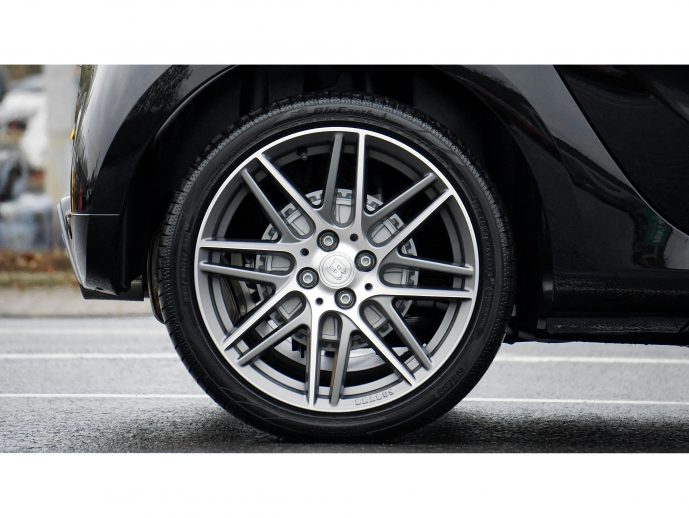Categories more
- Adventures (17)
- Arts / Collectables (15)
- Automotive (37)
- Aviation (11)
- Bath, Body, & Health (77)
- Children (6)
- Cigars / Spirits (32)
- Cuisine (16)
- Design/Architecture (22)
- Electronics (13)
- Entertainment (4)
- Event Planning (5)
- Fashion (46)
- Finance (9)
- Gifts / Misc (6)
- Home Decor (45)
- Jewelry (41)
- Pets (3)
- Philanthropy (1)
- Real Estate (16)
- Services (23)
- Sports / Golf (14)
- Vacation / Travel (60)
- Watches / Pens (15)
- Wines / Vines (24)
- Yachting / Boating (17)
Which Wheel Trends Are Shaping Car Culture — And Which Will Fade Fast?
Published
09/23/2025Wheels tell stories before engines start. They frame stance, hint at intent, and reveal how far an owner will chase identity through design. From track-inspired builds to quiet commuters, the right set blurs the line between necessity and expression, turning every driveway into a personal statement of priorities.
What once split style and function is merging. Forging techniques trickling down from racing now meet bold social-media aesthetics, turning everyday cars into rolling showcases. Yet time tests what lasts. Comfort, tire costs, and long-term finishes weigh heavier than passing clicks. True staying power belongs to designs that balance attention with endurance, rewarding drivers long after trends fade.
How Engineering Quality Shapes Wheel Choices
Engineering now sits at the center of wheel choice. Forged models showcase meticulous machining, reduced weight, and stamped serials that prove authenticity as much as performance. Buyers study structural claims alongside styling, valuing finite-element testing and corrosion-resistant finishes as much as spoke shape. Among popular choices, Vossen Wheels stand out for blending precise engineering with distinctive design that appeals to both enthusiasts and daily drivers.
Hybrid-forged wheels land in the middle, balancing lower cost with meaningful strength and lighter weight. Certification marks and batch tracking, once exclusive, now set mainstream expectations. This transparency eases uncertainty and strengthens resale confidence. A wheel that is stamped, tested, and backed by warranty isn’t just a visual upgrade—it is a safeguard for handling, upkeep, and long-term value.
Design Features Driving Lasting Popularity
Wheel shape speaks louder than most mods. Deep concaves feel aggressive and tuned, while flatter profiles nod to factory design and everyday driveability. Thin spokes lighten the car’s footprint visually and mechanically, creating an understated performance signal. Designs that balance drama with restraint gain staying power because they align with both enthusiast pride and commuter practicality.
Color and finish adjust tone. Gloss black sharpens edges, matte bronze softens presence, and brushed aluminum keeps timeless appeal. Size plays its part too: one-inch increases often enhance stance without sacrificing comfort, while overreaching leads to fragile ride quality and ballooning tire costs. The combinations that last balance visual punch with livability and controlled maintenance demands.
Price Categories Steering Buyer Decisions
Cost brackets create clear buyer lanes. Cast wheels remain the entry point, offering affordable style but carrying weight penalties. Hybrid-forged designs attract drivers seeking lighter, stronger options without reaching premium pricing, while fully forged wheels deliver top-tier durability and reduced rotating mass that appeals to collectors and performance enthusiasts. Each method shapes not only handling but also repair options and resale outcomes.
Retailers present hybrids as the balanced choice, offering tangible benefits at a digestible cost. Cast retains popularity for easy replacements, while forged commands top resale. Strategic spending, especially on load-bearing front wheels in performance cars, maximizes return by sharpening handling while preserving long-term confidence.
Buyer Behavior That Fuels Short-Term Fads
An influencer’s post can flood classifieds with buyers chasing the same showy rim. Oversized setups and mirror-like chrome pop online because they photograph well, yet daily driving exposes drawbacks: harsher ride from lower-profile tires, higher replacement costs, and greater risk of curb or pothole damage when offsets are aggressive. Such choices suit show cars more than errands.
Flashy finishes and wild spoke patterns often lose buyer interest once maintenance, tire costs and insurance notes hit owners. Trend-driven buys can complicate resale, shrinking the pool of willing buyers and dragging trade-in values. A practical checkpoint is scanning local resale listings to see which finishes command lasting demand.
Everyday Care That Decides Which Styles Last
Longevity doesn’t come from the showroom—it’s preserved in routine. Brake dust, salt, and grime attack finishes daily, and without steady cleaning, even premium wheels lose their edge. Gloss hides marks but benefits from pH-neutral shampoos and microfiber care. Matte finishes resist polish but respond well to foaming cleaners, while brushed metal rewards soft, grain-following strokes.
Protective layers extend the cycle. Ceramic coatings and sealants reduce buildup and lengthen intervals between maintenance, cutting future refinishing costs. Complex designs and mirrored surfaces demand constant attention, while simpler layouts sustain appeal with less labor. The styles that truly last balance aesthetics with realistic upkeep, holding market value alongside their shine.
Trends in automotive style may ignite quickly online, but longevity comes from a measured mix of design, performance, and care. Engineering strength, practical sizing, and finishes that age with grace distinguish lasting choices from passing novelties. Car culture rewards individuality, yet durability, comfort, and resale value ultimately guide which options prove worthwhile. True appeal is not locked in glossy photos but in how a choice performs months and years later. When style meets substance and upkeep stays manageable, the investment holds its ground—continuing to turn heads and retain value well after the spotlight fades.















